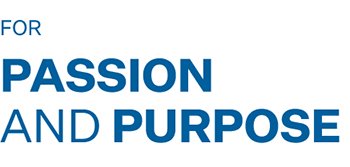More than good intentions
Scholarship recipient and Chair of Pregnancy Help, Rachel Vicars MInstD, says finance course gave her confidence to ask questions.
World Vision board member Matthew Prichard reflects what he has learned in three years of not-for-profit governance.

|
Author: Matthew Prichard |
I remember having two worries about joining the board of World Vision. Would sitting at the board table be too removed from the fieldwork to give me a sense that I was contributing? And would there be enough challenge to make it interesting enough? I was pretty silly to worry on either score.
In the end it was the calibre of the other board members which made it a nobrainer. I was approached by Jon Hartley, a quiet giant of New Zealand governance, who has recently become chairman of Kiwibank. His passion for World Vision’s purpose and our work runs deep, and I wanted the experience of being on a board with him and the other excellent board members. Now in my third year, there are some myths I sometimes hear about not-for-profit (NFP) governance that are worth exploding.
My World Vision board role is only my second board role (both NFPs). Everyone has to have a first. But I do not at all subscribe to the view that governance of NFPs requires less experience or skill than commercial roles.
The World Vision board I joined has enormous experience and we’re using all of it to navigate the challenges and opportunities the organisation faces. While that board is a fantastic learning environment for me, but it definitely would not work to have a whole board of people with their trainer wheels on. Which leads on to…
At World Vision, we commit to 10 to 15- year programmes of work in the world’s poorest communities. We fund most of that work by appealing directly to the generosity of ordinary New Zealanders annually. Failing to achieve our revenue could mean having to walk away from people who are desperately reliant on the support we give them.
We’re also confronted and disrupted by changes in technology. Our core offering was developed in the last century and relies on a relationship with a sponsored child through letters, cards and photos. Today, we suddenly live in a world where people are used to having a “friend” on the other side of the planet, and can see online what that friend had for breakfast and how they’re feeling right now. We’re having to completely rethink how we can safely deliver a relationship that meets this completely new “market” expectation.
Our people work with multiple governments. They negotiate the sensitivities of a range of religions. They oversee large-scale, enormously complex and subtle field programmes. All this must be achieved within the most frugal cost structures so that the maximum amount possible is delivered direct to the children and their communities.
In my experience so far, the strategic and governance challenges of not-for-profit organisations can be just as complex and serious (if not more so) as the commercial organisations I work with.
The World Vision board are all volunteers. That has no impact on their commitment to putting in the hours to do a great job of governance.
We have five board meetings each year. They’re at least half days, usually full days. We’re starting to meet for dinner the night before, to strengthen board relationships and warm up discussions before the board meeting the next day. I chair the Risk and Audit Committee, which meets four times per year and has a full agenda. We have a board strategic retreat each year that runs from a Sunday to Tuesday. It’s certainly not a light meeting agenda.
Outside of that, it’s just as important in a not-for-profit, as it is in a commercial organisation, that board members get out and about and understand the work in the field.
At World Vision New Zealand, our policy is that board members go to a field office every three years. I just spent a week with two other board members in Bangladesh. Bangladesh has 170 million people in a country the size of our South Island. We saw the work being done in the slums of Dhaka, the rural poverty around Nilphamari and the desperation of the Rohingya refugee camp on the border with Myanmar - all supported by money given by New Zealanders. If I’d never seen the cleverness and effectiveness of that work, I couldn’t properly do my role on the board in New Zealand.
The real difference in most NFP roles is the clarity and depth of purpose. I’m a KPMG partner and I am highly motivated by our firm’s purpose of “Fuelling New Zealand’s Prosperity”. But it’s hard to compete with the motivation I get from my World Vision role: “For every child, life in all its fullness.” This purpose brings a sharpness to our work as a board. The consequences of us failing to deal with the challenges, or maximise the opportunities to raise funds in New Zealand, would be felt by some of the world’s most vulnerable children.
Not for the faint heartedI find my not-for-profit governance role to be enormously rewarding. Although it requires time and focus, it gives me energy rather than consuming energy. This sector needs all the talent and experience that New Zealand directors can give it. The flipside is the fulfilment we all can receive from working on a purpose that can light us up with energy for our broader roles. |
| This article is featured in Boardroom April May 2020 issue |
